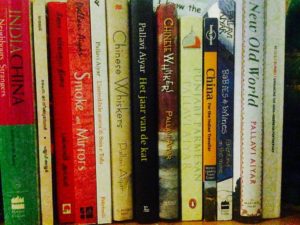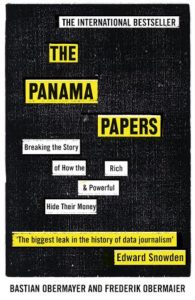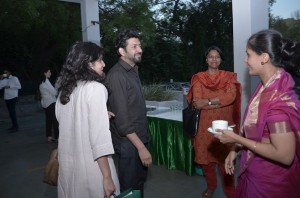“Penguin on Wheels: Walking BookFairs and Penguin Books India”
 ( I wrote an article for the amazing literary website Bookwitty.com on “Penguin on Wheels”. An initiative of Walking BookFairs and Penguin Books India. It was published on 28 June 2016. Here is the original url: https://www.bookwitty.com/text/penguin-on-wheels-walking-bookfairs-and-penguin-b/57725752acd0d076db037bf7 . I am also c&p the text below. )
( I wrote an article for the amazing literary website Bookwitty.com on “Penguin on Wheels”. An initiative of Walking BookFairs and Penguin Books India. It was published on 28 June 2016. Here is the original url: https://www.bookwitty.com/text/penguin-on-wheels-walking-bookfairs-and-penguin-b/57725752acd0d076db037bf7 . I am also c&p the text below. )
Literature does not occur in a vacuum. It cannot be a monologue. It has to be a conversation, and new people, new readers, need to be brought into the conversation too.”
-Neil Gaiman, Introduction, The View from the Cheap Seats ( 2016)
On the 16th of May 2016, Penguin Random House India circulated a press release about Penguin Books India’s one-year collaboration with Walking BookFairs (WBF) to launch “Penguin on Wheels”, a bookmobile that will travel through the eastern Indian state of Odisha promoting reading and writing.

This is not the first time Walking BookFairs has collaborated with a publishing house to promote reading. Their earlier “Read More, India” campaign saw Walking BookFairs supported by HarperCollins India, Pan MacMillan India, and Parragon Books India. Apart from these three publishers, WBF stocked books from various other publishers, including Tara Books, Speaking Tiger Books, Penguin, Duckbill, Karadi Tales, and Scholastic. “We got books delivered by our publishers on the road wherever we were displaying books.”
The concept of bookmobiles is not unusual in India, for some decades the state-funded publishing firm, National Book Trust, has maintained its own book vans. Yet it is the duo of Satabdi Mishra and Akshaya Rautaray that has captured the public imagination.
Walking BookFairs was established two years ago while Satabdi Mishra was on a break from her job and Akshaya  Rautaray quit his publishing job to set up an independent “simple bookstore” in Bhubaneshwar. The shop, which they prefer to think of as a “book shack”, runs on solar power. It is a simple space with the bare necessities and a garden. They allow readers to browse through the bookshelves, offering a 20-30% discount on every purchase throughout the year.
Rautaray quit his publishing job to set up an independent “simple bookstore” in Bhubaneshwar. The shop, which they prefer to think of as a “book shack”, runs on solar power. It is a simple space with the bare necessities and a garden. They allow readers to browse through the bookshelves, offering a 20-30% discount on every purchase throughout the year.
WBF also doubles as a free library. They introduced the bookmobile in 2014, as part of an outreach programme that would see them travelling to promote reading in the state. Speaking to me by email, Satabdi said,
“There are no bookshops or libraries in many parts of India. There are thousands of people who have no access to books. We started WBF in 2014 because we wanted to take books to more people everywhere. We have been travelling inside our home state Odisha for the last two years with books. We found that most people do not consider reading books beyond textbooks important in India. We wanted people to understand that reading story books is more important than reading textbooks. We wanted to reach out to more people with books. We also wanted to inspire and encourage more people across the country to read books and come together to open more community libraries and bookshops.”
India is well known for stressing the importance of reading for academic purposes rather than reading for pleasure. In a country of 1.3 billion people, where 40% are below the age of 25 years old, and the publishing industry is estimated to be of $2.2 billion, there is potential for growth. Indeed,there has been healthy growth across genres, quite unlike most book markets in the world.
The WBF team has been keen to promote reading since it is an empowering activity. They began in the tribal district of Koraput, Odisha, where they carried books in backpacks and walked around villages. They displayed books in public spaces like bus stops and railways stations or spreading them out on pavements or under trees, whatever was convenient and accessible. “That works because people in smaller towns feel intimidated by big shops,” they say.

Apart from public book displays, they also visit schools, colleges, offices, educational institutions, and residential neighbourhoods. They soon discovered that children and adults were not familiar with books. Bookstores too seem only to be found in urban and semi-urban areas and are lacking in rural areas, but once easy access to books is created there is a demand. As Neil Gaiman says in the essay “Four Bookshops”, these bookshops “made me who I am”, but the travelling bookshop that came to his day boarding school was “the best, the most wonderful, the most magical because it was the most insubstantial”. (The View from the Cheap Seats)
Speaking again via email, Satabdi says that they’ve found, “Children’s books are always the most sought after. We have many interesting children’s storybooks and picture books with us. We found that in many places, not just children but also adults and young people enthusiastically pick up children’s books, browse through and read them. Beyond a couple of urban centres in India, big cities, there are no bookshops. Most bookshops that one comes across are shops selling textbooks, guide books or essay books. Many people were actually looking at real books for the first time at WBF.”
In India the year-on-year growth rate for children’s literature is estimated to be 100%. Satabdi Mishra and Akshaya Rautaray stock 90% fiction. Rautaray says, “We believe in stories. I think, if you need to understand the world around you, if you need to understand science and history and sociology, you need to understand stories. I believe in a good book, a good story.”
The categories include literary fiction, classics, non-fiction, biographies, books on poetry, cinema, politics, history, economics, art visual imagery, young adult, picture books, children’s books, and regional literature from Odia and Hindi. The emphasis is on diversity, but they do not necessarily stock bestsellers or popular books like romance, textbooks, or academic books. That said, the Penguin on Wheels programme will dovetail beautifully with, “Read with Ravinder” another of the publisher’s reading promotion campaigns, spearheaded by successful commercial fiction author Ravinder Singh.

In December 2015, Satabdi and Akshay launched their “Read More, India” campaign (#ReadMoreIndia), which saw them take their custom-built book van, loaded with more than 4000 books across India. They covered 10,000kms, 20 states, in three months (from 15th Dec 2015 to 8th March 2016).
Over the course of the journey, they sold forty books a day, met thousands of people, and had a number of interesting experiences. One anecdote that gives an insight into the passion and trust that the young couple displays is of that of an elderly gentleman in Besant Road Beach road, Chennai. The older man was out for his daily jog and stopped to look at the books. He wanted to buy some books, but had left his wallet behind.
“We asked him to take the books and pay us later via cheque or bank transfer. He seemed surprised that we were letting him take the books without paying. He took the books and sent the money later with his driver. We want people to read more books. And if people cannot buy books, we want them to read books for free for as long as they want. People pay us in cash, in kind, sometimes they take books pay later, pay through credit/debit cards.”
The Penguin on Wheels campaign was launched because Penguin Books India had been following WBF’s activities and reached out to them. Earlier, they had collaborated for an author event in Odisha, but this new move is a focussed effort that will see the bookmobile travel within Odisha.
The books are curated by Akshay as Penguin Books India said graciously that “they [WBF] know best what their readers like more”. It will consist of approximately 1000 titles from the Penguin Random House stable. The collection will have books by celebrated authors, including Jhumpa Lahiri, John Green, Orhan Pamuk, Amitav Ghosh, Devdutt Pattanaik, Salman Rushdie, Ravinder Singh, Twinkle Khanna, Hussain Zaidi, Khushwant Singh, Roald Dahl, Ruskin Bond, and Emraan Hashmi.
Contests and author interactions will also be organised with the support or Penguin Random House. It will start with Ravinder Singh’s visit to Bhubaneshwar for the promotion of his newly launched book, Love that Feels Right. Satabdi Mishra adds, “We are happy to partner with PRH through the WBF ‘Penguin on Wheels’ that will spread the joy of reading around.”
Jaya Bhattacharji Rose
28 June 2016





